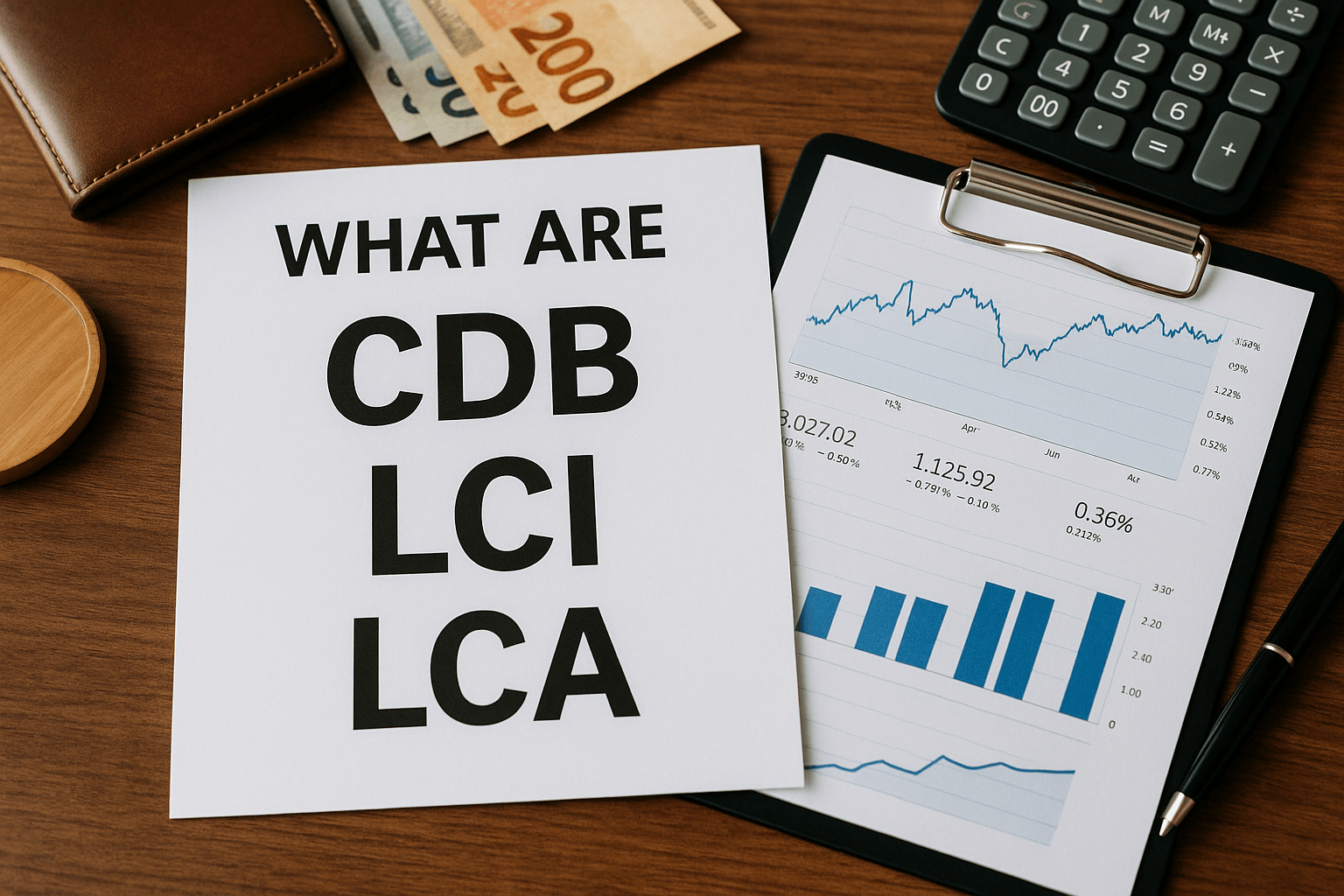If you’re just beginning your financial education, chances are you’ve come across terms like CDB, LCI, and LCA especially in content related to savings and conservative investment strategies in Brazil. These instruments are part of the fixed income family, and while they may sound technical at first, they are relatively simple to understand.
This article aims to explain what CDBs, LCIs, and LCAs are, how they work, and what role they play in financial education—all without offering financial advice or investment recommendations.
What Do These Acronyms Mean?
These three acronyms refer to financial products offered by banks in Brazil. Each one has specific purposes and characteristics:
- CDB: Certificado de Depósito Bancário (Bank Deposit Certificate)
- LCI: Letra de Crédito Imobiliário (Real Estate Credit Bill)
- LCA: Letra de Crédito do Agronegócio (Agribusiness Credit Bill)
They’re all income-generating instruments that return interest over time, making them popular among people who are looking to protect their money while still earning from it.
What Is a CDB?
A CDB is like a loan that you, the investor, give to a bank. In exchange, the bank pays you back the amount with interest over a fixed period of time.
Key Points:
- Issuer: Banks
- Risk level: Generally low, depending on the bank
- Return: Can be fixed (pre-set rate), floating (usually based on CDI), or a mix of both
- Liquidity: Varies; some CDBs allow withdrawal before maturity
- Protection: Covered by the Credit Guarantee Fund (FGC) up to a certain amount per bank and CPF
CDBs are used by banks to raise money to finance their lending activities. In turn, they reward the investor with interest for lending that capital.
What Is an LCI?
An LCI works similarly to a CDB, but the money raised by the bank is used specifically for real estate financing.
Key Points:
- Issuer: Banks
- Return: Often similar to CDBs, sometimes slightly lower due to tax benefits
- Liquidity: Most LCIs have a minimum term (often 90 days or more)
- Tax benefit: No income tax for individuals
- Protection: Also covered by the FGC
This exemption from income tax makes LCIs particularly attractive to many investors looking for safer and more efficient options for medium-term saving.
What Is an LCA?
An LCA is very similar to an LCI, but instead of funding the real estate sector, it supports agribusiness a critical part of Brazil’s economy.
Key Points:
- Issuer: Banks
- Return: Comparable to LCI
- Liquidity: Usually locked in for a set period
- Tax benefit: Also exempt from income tax for individuals
- Protection: Covered by the FGC
Like LCIs, LCAs provide a tax-advantaged way for individuals to allocate money while contributing to a specific sector—in this case, agriculture.
What Are the Main Differences Between Them?
| Feature | CDB | LCI | LCA |
|---|---|---|---|
| Use of Funds | General lending | Real estate | Agribusiness |
| Tax on Gains | Yes (15–22.5% IR) | No (for individuals) | No (for individuals) |
| Liquidity | Varies | Usually locked | Usually locked |
| FGC Coverage | Yes | Yes | Yes |
| Common Rates | CDI-related or fixed | CDI-related or fixed | CDI-related or fixed |
Why Learn About These Instruments?
Even if you’re not planning to use any of these financial products, understanding how they work helps you:
- Recognize how banks operate in fixed income markets
- Learn the difference between gross and net returns
- Understand how taxation affects investment outcomes
- Get comfortable with reading basic investment terms
Knowledge of these topics will help you interpret financial news and become a better-informed citizen when dealing with financial services.
Where Can You Learn More Safely?
If you’d like to go deeper into the subject without taking risks, here are safe ways to learn:
- Visit official bank websites that explain their products
- Explore educational content on financial literacy platforms
- Use simulated investment apps (with no real money involved)
- Read materials from central banks or consumer protection agencies
Avoid sources that pressure you to “act fast” or “invest now” with little transparency.
Final Thoughts: Understand Before You Decide
Learning about CDBs, LCIs, and LCAs is a great first step into the world of financial instruments. These products are relatively easy to understand and offer a clear example of how the financial system channels personal savings into economic activity.
Whether or not you ever use them, being aware of how they function strengthens your financial literacy and helps you ask better questions in the future. That’s the true power of informed learning no risk required.
